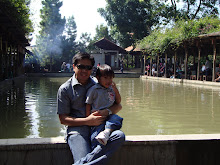Seven Design Elements of the Customer Interface
There are seven design elements of the customer interface (7Cs). It examines the characteristics of each element and gives a way to classify any website using the 7Cs Framework.
Look and feel Determination for Context classification
The look-and-feel of a website has two dimensions:
Form (or aesthetics), it focuses on the artistic nature of the site. Function, it relates to usability. Some argue that these are opposing deign aspects a involve unavoidable tradeoffs, while others believe that advancing technologies are leading new techniques and fever compromise as a both aesthetic and functional dimensions continue to expand.
Content Classification
The three content classifications are:
Product-dominant, the website’s priority is selling goods, although it often offers information as well (subcategories of Superstore, Category killer and Specialty store).
Information-dominant, websites exist for the purpose of providing information, generated either internally or externally.
Service-dominant, the websites help users perform a task, such as investing money.
Community
Users are motivated to join the community by involving the feeling and common interest sharing to create a group of people relationship.
There are three kind of community classified according to its functionality:
- Nonexistent Community
Sites that have no community offer no way for users to interact with one another
- Limited Community
Sites offer features such as reading and posting information, stories or opinions
- Strong Community
Sites offer interactive community functions such as chat rooms and message boards
Customization
• Generic
Displays the same face to every user
Example: newspapers, government agencies
• Moderately Customized
Customized to some extent, but not so customized that the website varies wildly with each user
Example: Most e-commerce websites
• Highly Customized
Makes extreme efforts to give each user an individualized experience
Example: My Yahoo!, Amazon.com
Communication
• One-to-Many, Nonresponding User, Websites send broadcast communications to defined audience, usually through e-mail newsletters or website events
• One-to-Many, Responding User, Websites send messages to registered users and invite them to submit comments or responses
• One-to-One, Nonresponding User, Websites send personalized messages to address users’ specific interest or needs
• One-to-One, Responding User, Websites send personalized messages such as reminders, but in this case users can respond, by e-mail or through live interaction
Connection
Connections can be divided into two basic types, depending on whether the pathway of connection leads the user off the original site or whether the user can retrieve materials from other sites without leaving the site. Outside links always cause a user’s exit from the original website, while framed links, pop-up windows, and outsourced content cause the retrieval of material from the same or other site without an exit from the current website.
Commerce
Commerce can be classified according to the ability to process the transaction (Low, Medium or High).
Monday, January 29, 2007
Subscribe to:
Post Comments (Atom)


No comments:
Post a Comment